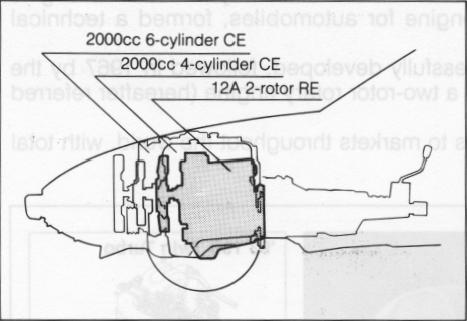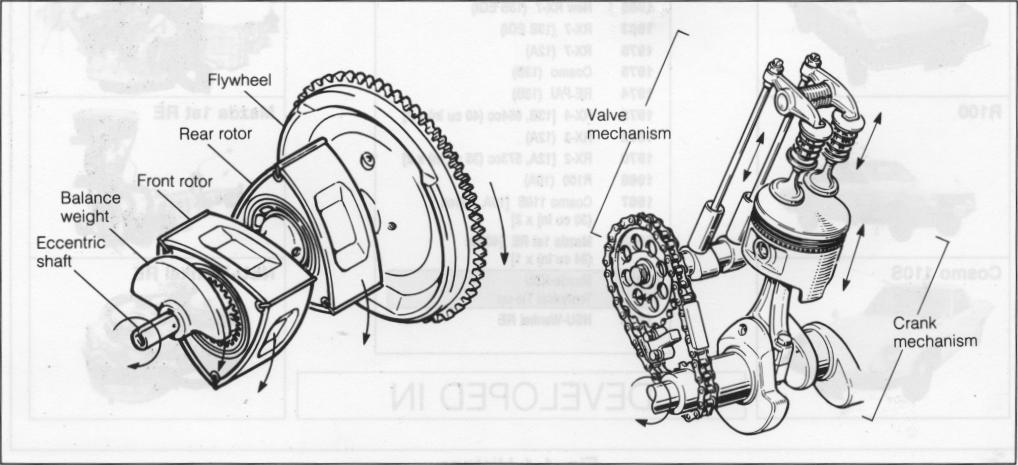COMPACT AND HIGH OUTPUT
As can be seen in figure 2-2, there are four distinct processes, or strokes: intake of the air/fuel mixture, compression, expansion, and exhaust, much the same as the four-cycle reciprocating engine (hereafter referred to as the CE). In contrast, however, there is one output for each rotation of the output shaft. Also, if we compare this engine with a four-cycle, four-cylinder reciprocating engine of the same output class, we see that the RE is much smaller, only 2/3 the size of the reciprocating engine.
Fig. 2-1 Engine size
Fig. 2-2 Rotary engine cycle
LOW VIBRATION AND NOISE LEVELS
The rotor, eccentric shaft, and other parts always rotate in the same direction, thus dynamic balance is easily accomplished.
Furthermore, because there is no opportunity for metal surfaces to strike, unlike the reciprocating motion of components such as pistons and valves, there is little vibration and noise.
Fig. 2-3 Rotary and reciprocating engines
2


